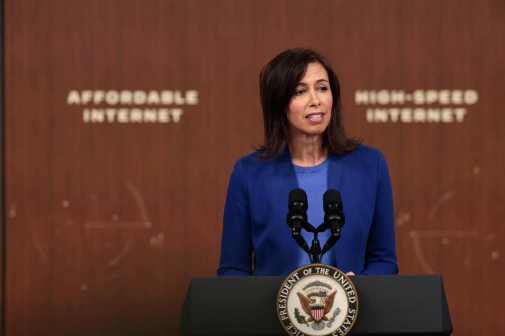Most states have a budget surplus, but should be wary of financial ‘cliff’

Many states have a budget surplus going into 2022, thanks to record-high revenues and several federal funding measures that have enabled heavy investments into broadband expansion and IT modernization. But governors and legislators should be wary of falling off of a financial “cliff” after federal aid expires, experts at the Pew Charitable Trusts told StateScoop.
The National Association of State Chief Budget Officers published data recently showing that states collected nearly 15% more in total income tax revenue in fiscal 2021 than the year prior, totaling nearly $455 billion. That increase, alongside the $1 trillion infrastructure act President Joe Biden signed last November and stimulus funds from the American Rescue Plan, has states flush with cash. The issue, said Josh Goodman, a senior officer with Pew’s state fiscal health initiative, is that there are “temporary factors” that policymakers and elected officials don’t always acknowledge.
“There’s certainly an aspect of state budgeting where the essential task is to write the budget for one to two years at a time, depending on the state, and both state legislators and governors focus on that because they have statutory obligations to do that,” Goodman said. “Certainly, that contributes to states sometimes having a shorter-term mindset.”
Goodman estimated that half of all states consistently have longer-term projections of revenue and spending. Yet even when they do, they may not distinguish between investing in projects with ongoing expenditures and projects that have one-time costs. But states can better ensure that they’ll be able to support costly initiatives, like IT modernization or broadband expansion, if they analyze those differences, he said.
“There are some technology projects that hold the promise of saving you money over the long term, but there are probably other ones that have ongoing costs associated with them,” Goodman said. “If [states] find their revenue isn’t going to support the spending needs, then that speaks to using this surplus on more one-time measures.”
Another Pew senior officer, Anna Read, said states that have hundreds of millions to spend on broadband expansion are currently struggling with deciding what technologies to invest that money in. States are largely facing “variations of the same challenges” in attempting to solve their specific broadband issues, she said.
For instance, fixed-wireless and low-earth-orbit satellite technologies are potentially less costly options to provide internet access to unserved areas than fiber, Read said, but they lack the long-term benefits of built fiber connections. And with the pace at which technology evolves, Read said that it’s possible states investing in what appear to be the best solutions “right now” may cause them to miss out on more advanced options in the future.
“It’s a concern about what technologies you’re investing in now, like whether they’ll continue to meet the needs of the future,” Read said. “If you invest in something now, you might miss something that’s better 10 years down the road. So it’s that balance of allowing flexibility but also investing in what we know works now.”






